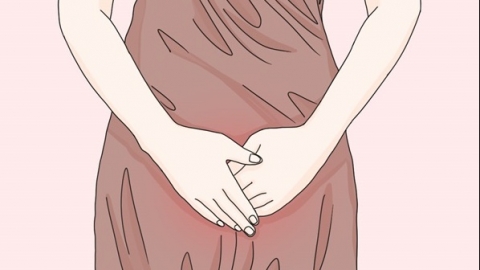What causes lumps on the labia?
Lumps on the labia may be caused by friction, hormonal changes, vulvitis, Bartholin's cyst, or genital warts, and appropriate treatments can be selected based on specific situations. If discomfort occurs, it is recommended to seek medical attention at a hospital promptly and follow medical advice for treatment.

1. Friction: Prolonged wearing of tight clothing or frequent bicycle riding may cause repeated friction on the skin of the labia, leading to localized tissue proliferation and formation of lumps. Choosing loose, breathable cotton clothing, avoiding extended periods of cycling or other friction-inducing behaviors, and maintaining vulvar hygiene can generally help alleviate the condition gradually.
2. Hormonal changes: During special periods such as puberty or pregnancy, significant fluctuations in female hormone levels may affect the metabolism of the skin on the labia, causing small lumps to appear locally. Getting adequate rest, maintaining good lifestyle habits, avoiding excessive fatigue, and keeping the vulva clean by washing daily with warm water may help alleviate symptoms as hormone levels stabilize over time.
3. Vulvitis: This condition is often caused by infections from pathogens such as bacteria or fungi, or irritation from urine or feces. Symptoms include itching, pain, and redness and swelling of the vulvar skin, which may be accompanied by lumps. Under a doctor's guidance, patients may use medications such as povidone-iodine solution, clotrimazole cream, or erythromycin ointment to relieve symptoms.
4. Bartholin's cyst: This condition results from blockage of the Bartholin's gland duct, causing accumulation of secretions. Symptoms include a lump on one side of the labia, varying in size but often oval-shaped, accompanied by pain and swelling. Severe cases may affect walking and sitting. Patients may use medications such as cefixime capsules, metronidazole tablets, or ibuprofen sustained-release capsules under medical guidance to alleviate symptoms.
5. Genital warts: This condition is caused by infection with the human papillomavirus (HPV) and is primarily transmitted through sexual contact. Symptoms include one or multiple scattered pale red small papules on the labia, which are soft in texture and pointed at the top. Over time, they may increase in number and size, forming papillary or cauliflower-like growths. It is recommended to use medications such as podophyllotoxin tincture, imiquimod cream, or recombinant human interferon α-2b gel under medical supervision.
In daily life, it is recommended to maintain cleanliness and dryness of the vulva, regularly wash with warm water, and avoid using harsh detergents.




